Florentineantiquarian, collector, and Italian historian Alberto Bruschi (Florence, 1944) defined in 1993 within the book Epoca the famous art collector Stefano Bardini (Pieve Santo Stefano, 1836 - Florence, 1922), the one who in the 1880s decided to create his own museum, now known as Museo Stefano Bardini in Florence, with these words: "he was the prince ofantiquaries and at the same time theantiquarian of princes.“ Indeed, Bardini is commonly considered in most writings to be the ”prince of antiquaries," and it is for this reason that this year, on the occasion of the 31st edition of the Florence Biennale Internazionale dell’Antiquariato, which will be held from September 21 to 29 as usual at Palazzo Corsini, the exhibition Universo Bardini, entirely dedicated to this significant figure for Florentine history and art, is being offered to the public. Placed in thealcove on the second floor of the historic palace, the exhibition curated by David Lucidi intends to recount the prince of antiquarians in his various aspects: not only a mere merchant-collector, but above all as a protagonist of the events of art collecting between the 19th and 20th centuries.
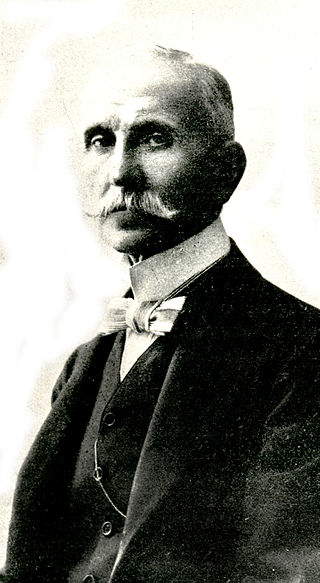 |
| Stefano Bardini portrayed in a photograph of the time |
Thanks to the right relationships with a number of prominent personalities of the time, Bardini was able to foster the birth of international collections now considered fundamental to museums such as the Bode Museum in Berlin, the Musée Jacquemart-André in Paris, and theIsabella Stuart Gardner Museum in Boston.
Of Arezzo origins, born precisely in Pieve Santo Stefano in 1836, Stefano Bardini frequented the city of Florence from a young age, first as a student of painting at theAccademia di Belle Arti, where he had his first encounter with ancient art, and later as a regular in Macchiaioli circles. Accustomed by then to art, both ancient and contemporary, he began in 1866 to pursue the business of restoring paintings and dealing in works of art: this trade was favored by his choice of Florence as the place of his existence, both from a living and a working point of view, since the Tuscan city was known for its antiquities market , which could include the most disparate objects of use and art, from gold grounds to 15th-century terracottas. His passion for art and his skill in trading led him to forge relationships with the most important Italian and foreign museums and collectors, as well as archaeologists and art historians, including Bernard Berenson (Butrimonys, 1865 - Fiesole, 1959), Frederick Mason Perkins (Plymouth, 1874 - Assisi, 1955) and Wilhelm von Bode (Calvörde, 1845 - Berlin, 1929), the latter of whom became director general of the Berlin museums from 1906 to 1920 and founder in 1904 of the Kaiser-Friedrich-Museum, under the influence of Bardini himself. Among the collectors with whom he came in contact were John Pierpont Morgan (Hartford, 1837 - Rome, 1913), Henry Clay Frick (West Overton, 1849 - New York, 1919), Isabella Stewart Gardner (New York, 1840 - 1924), Robert Lehman (New York, 1891 - 1969), Madame André, whose collection is now known as the Musée Jacquemart-André, Prince John of Liechtenstein, Figdor of Vienna, whose collections are well known and renowned today.
Another of Stefano Bardini’s peculiar aspects as a collector was his special care inexhibition design: he believed in the need to recontextualize works of art (whether paintings or sculptures) detached from their original context. It was through this idea of staging that the myth of Italy and Renaissance Florence was spread overseas. As stated in the exhibition catalog Unexpected Guests. Unpublished or Little Known Works from the Bardini State Collection, held in Bologna from September 2006 to January 2007, curated by Mario Scalini and Giampiero Cammarota: “the winning line to impose Renaissance taste overseas was to advocate furnishing in style, rather than the enhancement of masterpieces from lesser-known spheres of art making. It was undoubtedly the force of impact of recontextualization, such as that operated at Palazzo Davanzati, that persuaded, at a glance, of the possibility of offering comfort and decorum, according to schemes of the nineteenth-century upper middle class, by resorting to antique furnishings. Imposing stores of material, understood in the crudest sense of the term, worked but also reworkable and recomposable according to the needs and demands of a clientele that approached the antique object with the centimeter in its pocket, to assess whether and in what way it could be set in the context to which it was to be destined, were therefore necessary.”
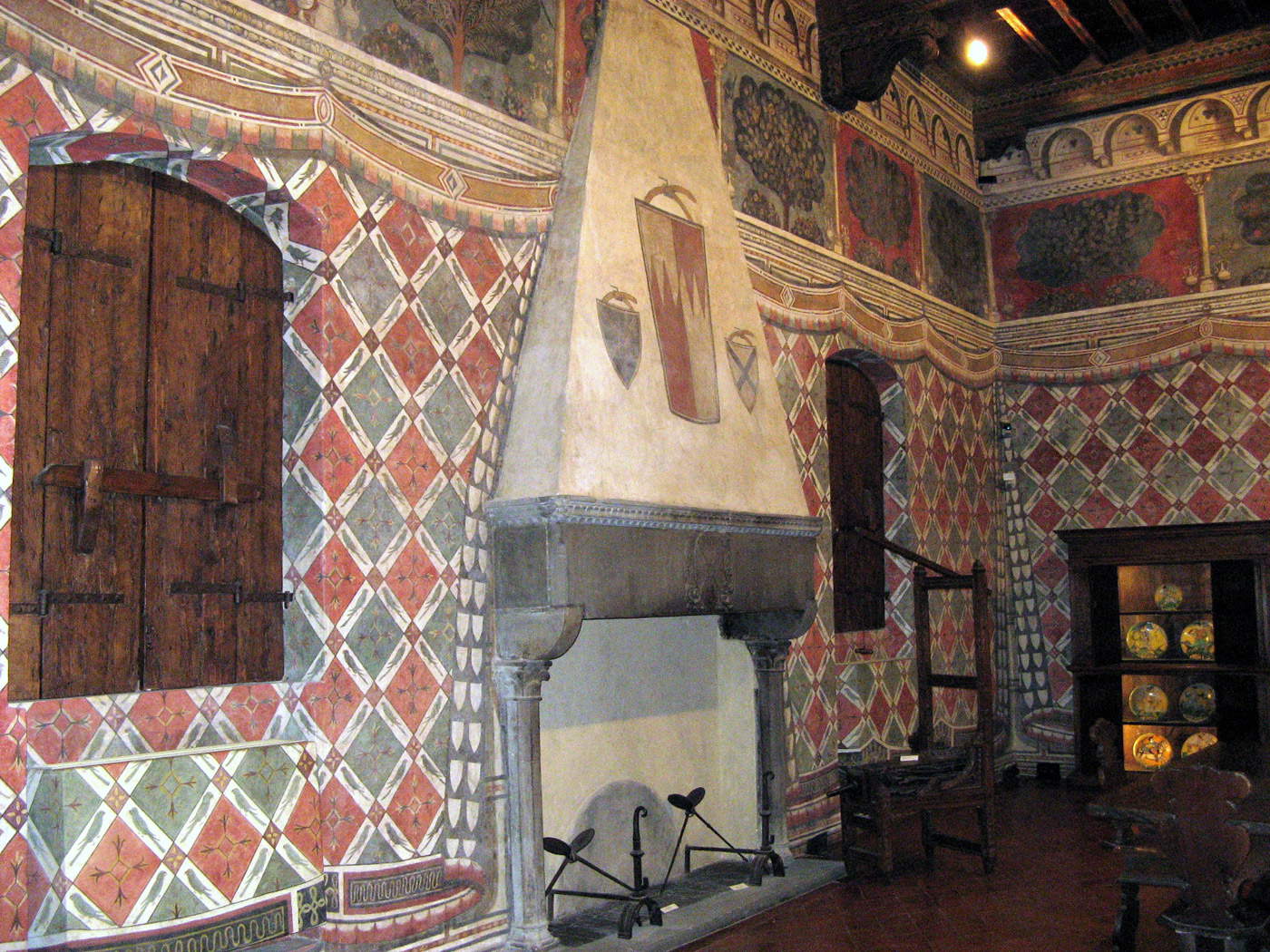 |
| A room at Palazzo Davanzati in Florence. Ph. Credit The Museums of Florence |
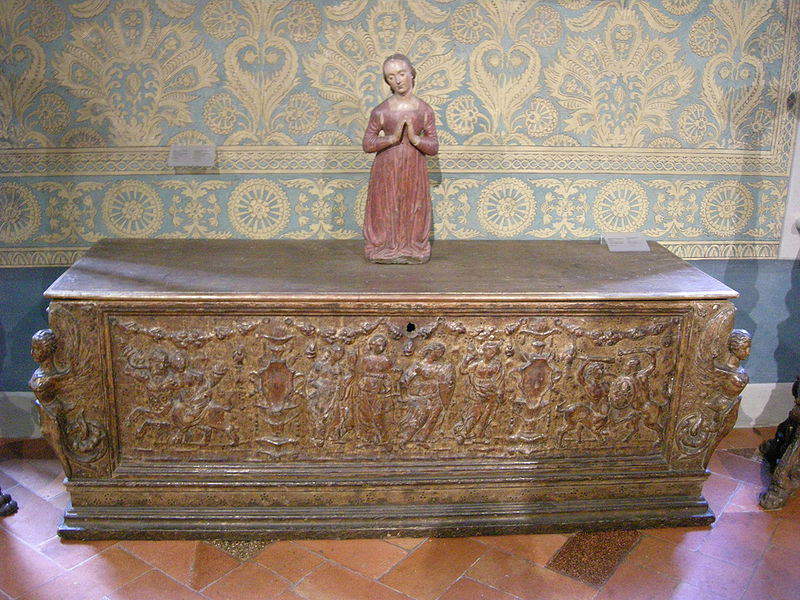 |
| 15th-century Florentine chest from the Pollaiolo workshop. Ph. Credit Francesco Bini |
Palazzo Davanzati was purchased in 1904 by Elia Volpi (Città di Castello, 1858 - Florence, 1938), a friend of Stefano Bardini, and since, according to their intentions, the palace was to become a private museum dedicated to Florentine Renaissance interiors, the two planned to furnish it with Renaissance furniture and objects: everything was to reflect Renaissance taste, from the ceilings to the doors to the fireplaces. They also purchased works of art and objects that harked back to that era, especially wedding chests, which were popular in the art market during the 20th century. Volpi restored the interior of Palazzo Davanzati, creating authentic domestic spaces within it. In this, the influence of Bardini, who in turn inspired the collections of Isabella Stewart Gardner and Nelie Jacquemart (Paris, 1841 - 1912), was fundamental: indeed, both purchased several Renaissance chests from the famous merchant-collector.
Bardini, in the course of his work, designed emotional settings within which to place the sculptures, paintings and decorative arts for public display. Period photographs depict some of these painstaking arrangements at Palazzo Bardini: a dialogue was literally created between the architecture, furnishings, frames and works on display. On the occasion of the dedicated exhibition in the Florence Biennale Internazionale dell’Antiquariato, there will be a number of works placed in the background of the large reproductions; these, all from the Bardini collections, were chosen on the basis of three criteria: those most photographed in the period settings, those that most represent Bardini’s exhibition aesthetics, and those that are still little known today, both to visitors and to scholars, from the museum’s storerooms.
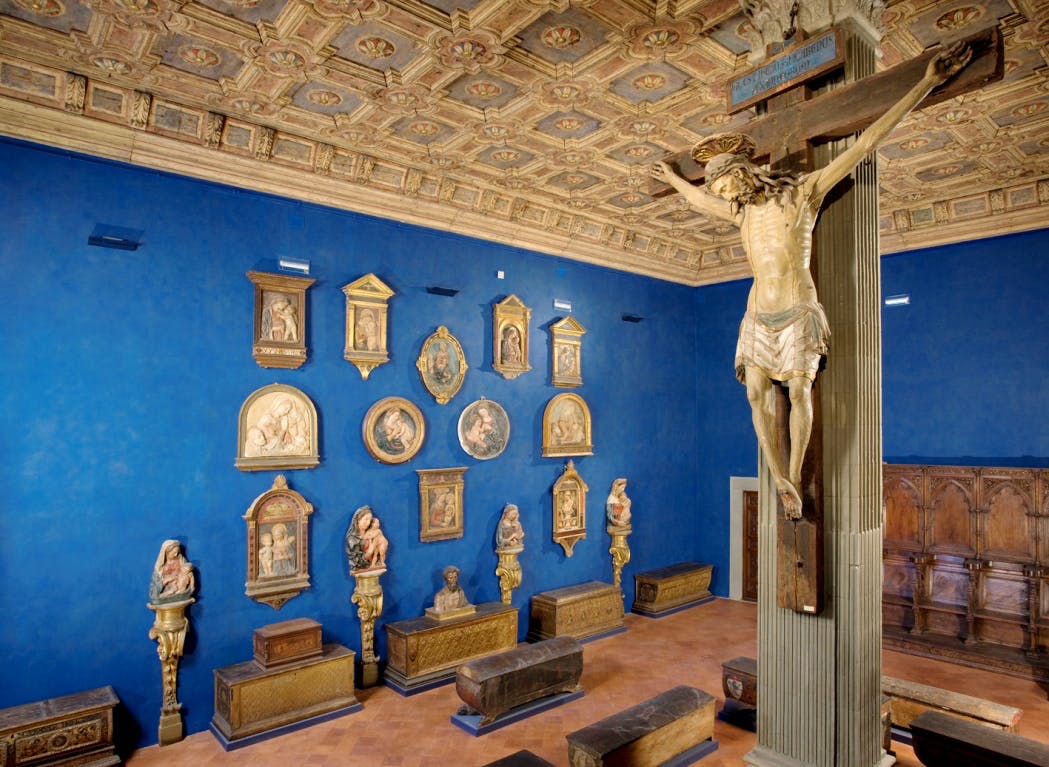 |
| The Hall of the Madonnas in the Stefano Bardini Museum. Ph. Credit VisitFlorence |
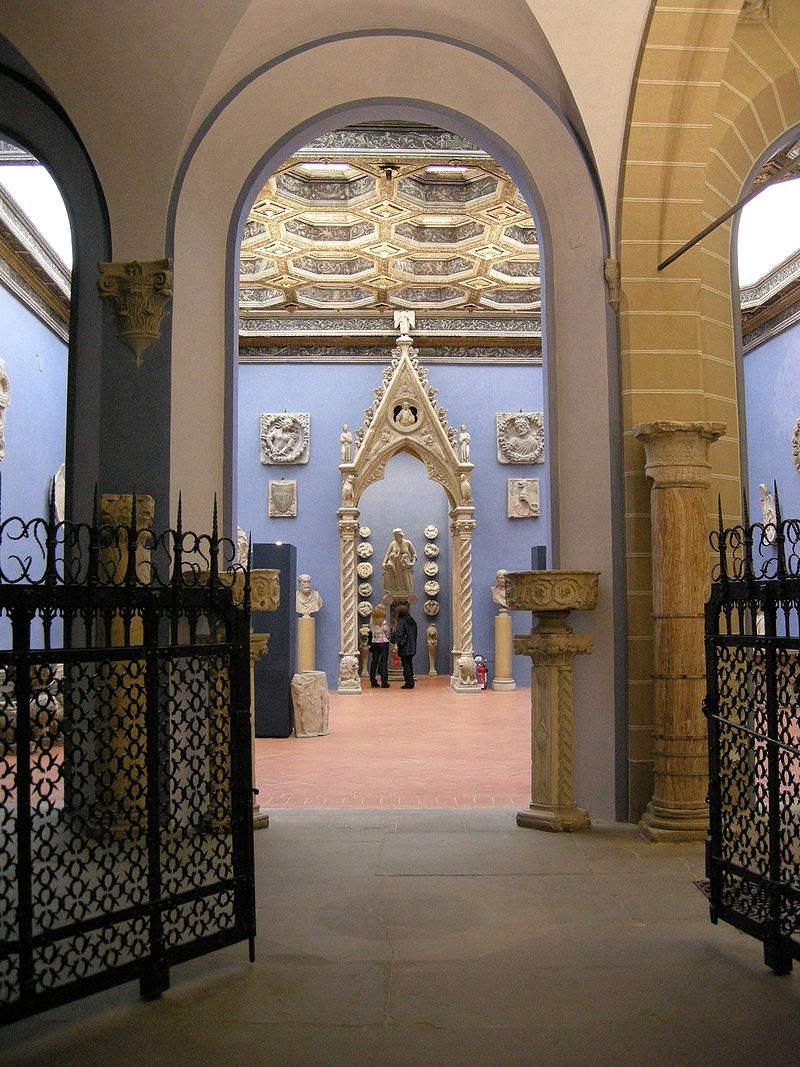 |
| Interior of the Museo Stefano Bardini. Ph. Credit Francesco Bini |
Concerning again the issue of the importance of the dialogue between artwork and exhibition space and the focus on an emotional setting, an era is underway in which the most important galleries, following an international shift in collecting taste, are increasingly inclined to conform to the most modern trends in architecture, interior design and contemporary art. With a view to creating his own museum, Bardini bought the church and convent of San Gregorio della Pace and restored them, creating a palace in the neoclassical style: some altars from a church in Pistoia were reused in the windows of the palace’s second floor; historical and artistic relics of the collector were used for the coffered ceilings and door lintels; and the walls were painted a particular shade of blue, renamed Blu Bardini.
Stefano Bardini, with his will dated Sept. 10, 1922, showed his affection for Florence by donating his palace and a rich important museum to it, demonstrating the cult he had always had for its artistic history. Thanks to this gesture of affection for his adopted city, it is now possible to enter the Bardini Museum’s current home and admire the more than 3,000 works housed inside, including paintings, sculptures, armor, musical instruments, ceramics, medals, coins and antique furniture. And this year, the Florence Biennale Internazionale dell’Antiquariato wished to pay homage to the “prince of antiquaries” in order to acquaint visitors, not only with the most beautiful art objects on today’s antiques market, but also with the story of one of the protagonists who left an indelible legacy to Florence and everything that entered its world.
Warning: the translation into English of the original Italian article was created using automatic tools. We undertake to review all articles, but we do not guarantee the total absence of inaccuracies in the translation due to the program. You can find the original by clicking on the ITA button. If you find any mistake,please contact us.